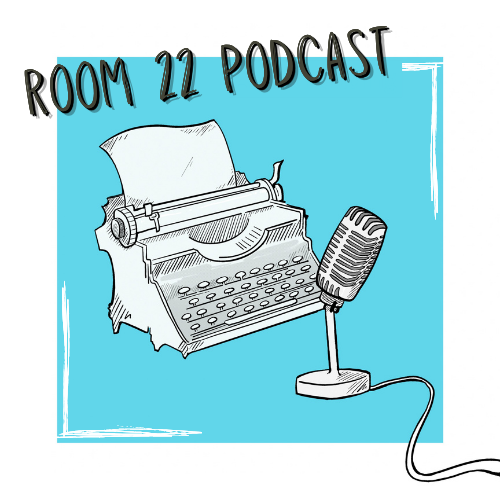As the thick scent of aged paper and leather furnishes the air, a small crowd of shoppers disperses throughout the store, foraging for the next paperback to satisfy their craze. They wander along the shelves and dance up the weathered steps, laughing with friends and chitchatting with employees.
An older woman peers over the register as she secures her new novel with winking eyes, declaring that the worker “keep the change.”
Meanwhile, a young boy on his living room couch adds the same book to his Amazon cart in two clicks.
In recent years, local bookstores have struggled to stay afloat during the modern upsurge in online shopping and large-chain booksellers.
However, as other book-buying methods flourish, independent bookstores adapt to the digital age’s constantly growing and changing environment, even with the setbacks that challenge tradition.
Shelf-destruction
From 1998 to 2019, the number of existing bookstores in the U.S. constantly declined with no indication of looking up. In this period, more than half of all bookstores in the U.S. closed down, according to the United States Census Bureau.
Several factors illustrate this plunge in numbers.
Many consumers simply don’t have enough time during the day to visit bookstores, especially when there is a lack of locations in close range. Due to the inconvenience, these shoppers turn to other methods, such as shopping online or purchasing e-books to satisfy their needs.
“Going online gives me so many more options,” said Emma Wu, a junior at Carlmont. “In bookstores, I often make more impulsive purchases. I also like reading what the book is about or researching the author before buying. Buying online helps me do that.”
When COVID-19 threatened the U.S., the bleak reality of the modern age began to set in for independent bookstore managers. Not only was yearly revenue previously declining due to the gradual upgrade of e-books and online retailers, but the outbreak of COVID-19 also gave store owners no choice but to close shops to control the spread of the virus temporarily.
As a result, small businesses including local bookstores suffered. Independent stores were already disadvantaged due to limited resources and legal structures, and these burdens grew in prominence with the introduction of COVID-19.
Despite this, the COVID-19 pandemic turned out to be less detrimental to independent businesses than it seemed. According to research by Ronen Harel, around half of small businesses surveyed did not experience a decline in revenue during the COVID-19 period compared to the same time as the previous year. In fact, around 8% of the small businesses revealed a revenue increase during this period.
Though many independent bookstores did not experience a decline in revenue due to COVID-19, many stores faced the considerable growth of online retailers and e-books during this period.
According to the United States Census Bureau, e-commerce sales increased by $244.2 billion during the first year of the COVID-19 pandemic.
Of course, this surge in revenue was mainly due to the quarantine orders required towards the beginning of the pandemic. Independent stores that relied on in-person interactions and experiences became outdated during the pandemic because of dangerous practices.
As more readers turned to online resources, independent bookstores lost customers at an alarming rate.
Despite the setback, independent bookstores recovered as precautions surrounding COVID-19 lifted, and they discovered new approaches to keep their customers in the physical world of books.
Booked for business
Numerous local bookstores learned to survive in a time of uncertainty. After all, there are other ways to survive as a bookstore other than simply selling books.
A strategy developed by many independent bookstores is organizing non-profit events and fundraisers. Community events increase business exposure and improve their image.
In San Francisco, one independent bookstore has utilized this strategy. Green Apple Books holds events such as local author celebrations or school contests at least once per week.

According to their website, Green Apple Books hosts over 100 authors annually. Regular events build a tight-knit community within the city and encourage individuals to visit the store to support those around them.
Another strategy the store takes advantage of is establishing products other than books on the market to diversify and widen the range of offerings to their customers.
According to an analysis directed by Shuang Yu, Yun Qin, Yuyue Chi, and Meiting Zhang, diversifying and expanding from selling books to offering a more comprehensive range of products increases customer adhesion since consumers can enjoy various services. As opposed to providing popular and trending products, store owners should adapt to the style of the bookstore as well as the style of their customers.
Green Apple Books offers keychains, t-shirts, posters, and more to broaden and increase sales for the store. Other standard products sold in bookstores include unique cards, toys, calendars, and school and art supplies.
Through organizational tactics, bookstores can help customers stay engaged during their visit and guide them through the store.
“When I go to a bookstore, I don’t gravitate toward a certain section,” Wu said. “Looking around helps me explore different genres and books.”

Bookstores put organization methods into practice through employee reviews and recommendations. Often, employees write on small cards about certain books they’ve read, which can help customers pick out a book with the support of another person’s opinion.
Bookstores also typically separate books by genre, using drawings and apparent signs to direct customers to whichever section piques their interest.
One main reason behind the popularity of online shopping is that there’s little to no human interaction involved when making a purchase. Organizational methods such as employee recommendations and marked sections help customers remain independent when browsing the selections and eliminate the need to ask for help if they don’t desire it.
Page by page
Sure, one can keep an entire book on their phone-sized device. Plus, purchasing a new novel takes a few clicks or taps. But there’s more to bookstores than the actual books themselves.
Local bookstores help to create a sense of community by connecting people with similar interests and hobbies. According to a study by Ryan L. Raffaelli, the number of promotions of local communal values per year by bookstores was positively linked to the number of existing stores.
People want to be involved in their community. Shopping locally is the perfect way to strengthen communal ties and create a sense of belonging. One can purchase a product from anywhere, but a close community cannot be bought.
Shopping locally not only curates a close feeling of community but also directly benefits the economy. According to a novel by Danny Caine, sourced initially from the American Booksellers Association, approximately 29% of revenue at independent bookstores recirculates in the local economy.
It’s guaranteed that purchasing e-books or from online retailers does not have the same impact. Although it may be more convenient, these alternative methods detract from local bookstores and the local economy.
The next chapter
A new page turns over as consumers navigate the digital reading age, and the question arises: what is the future of physical bookstores?
Truthfully, there isn’t a sure answer. Some argue that e-books and online retailers will take over, while others believe that bookstores will stick around for a long time.
Considering the numbers, the first argument seems more plausible. As e-commerce continues to spike, local bookstores will continue to shut down. However, it’s crucial to remember the significance of community in a person’s life.
As the world of books becomes increasingly dominated by online retailers and mega-chains, local bookstores remind readers of the comfort of spaces accompanied by other bibliophiles and expose the significance of cultivated community.
One can add a novel to an Amazon cart in two clicks at any time, anywhere. A community takes longer to develop but feels twice as good as clicking the purchase button.
This story was originally published on Scot Scoop News on November 25, 2024.

































